The Art of New Season Extra Virgin Olive Oil
By Adam CoghlanA conversation about olive oil: the process, the quality, an idyllic rural pocket of the western Peloponnese, and creating a brand without intending to do so – Tom Woodgate and Juli Laki are behind Honest Toil, the company they founded 15 years ago; today it’s one of the most dynamic, well-known premium olive oils in Europe. Here, Something Curated‘s Adam Coghlan chats with Woodgate just a few weeks after the most recent harvest.
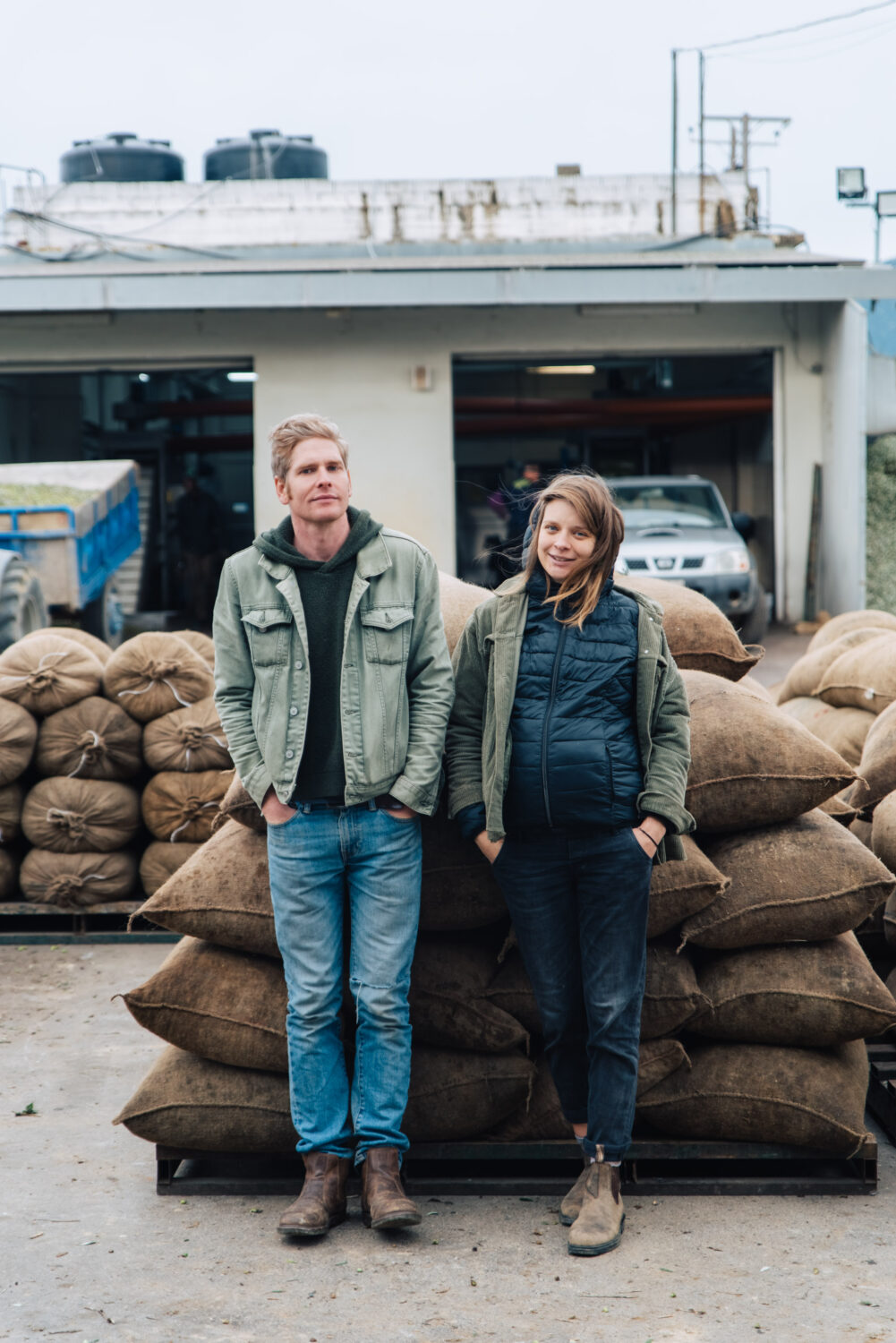
Adam Coghlan: Hello Tom. I’m keen to go right back to the beginning: So, when did you start the brand and how long had you been planning it?
Tom Woodgate: Hi Adam. So, we definitely started way before we actually planned anything! We were young and it was all very serendipitous – we absolutely never set out to make another olive oil “brand” or even had any intention of starting a business.
I’m probably quite naive, but only really now realising that there are a lot of ‘brands’ out there that have really very little connection to the product they’re actually peddling. It seems like they started with a business plan and investors, and the actual product may as well be whiskey or chocolate for all the connection they have to the land.
For better or worse, Honest Toil has never really had a plan.
I was invited to a small startup coaching thing a few years ago where the first question they asked was ‘what‘s your exit strategy?’. The idea completely stumped me… I really don’t think of what we’re doing as a ‘brand’… it’s not a venture run from afar with occasional ‘field trips’; we live and work in the grove and we’re knee deep in olive oil for the long haul.
AC: Can you give us a bit of background on extra virgin olive oil – a short explainer, what it means, what defines it … tell us a bit about the classifications and quality, as well as variables, with olive oil…
TW: When you taste real olive oil – I’m talking unfiltered, unblended stuff that’s actually from the most recent harvest, no compromises, no dodgy mixing with inferior oils or last year’s batch – it’s a bit of a revelation: Aaaaah, that’s what it’s meant to taste like! The intensity of the flavour (think fresh-cut grass) is incomparable.
“Extra virgin” means the oil is mechanically pressed (not chemically extracted) at <27°C and has an acidity of <0.8%. Most bigger brands will be a heavily blended mix of olive oil and extra virgin olive oil in order to achieve a low enough acidity to just legally qualify as ‘extra virgin’.
Simply put, cold-pressed and unfiltered is the closest thing to consuming straight-up olive juice, with no unnecessary processing. When you raise the temperature of the pressing, you can squeeze more out of the olive, but you also get a significantly lower-quality result.
Ours really is produced ‘as is’; just the juice of crushed/squashed olives, pressed in small batches and never blended with inferior oils or oil from older harvests… and it speaks (rather, sings!) for itself.
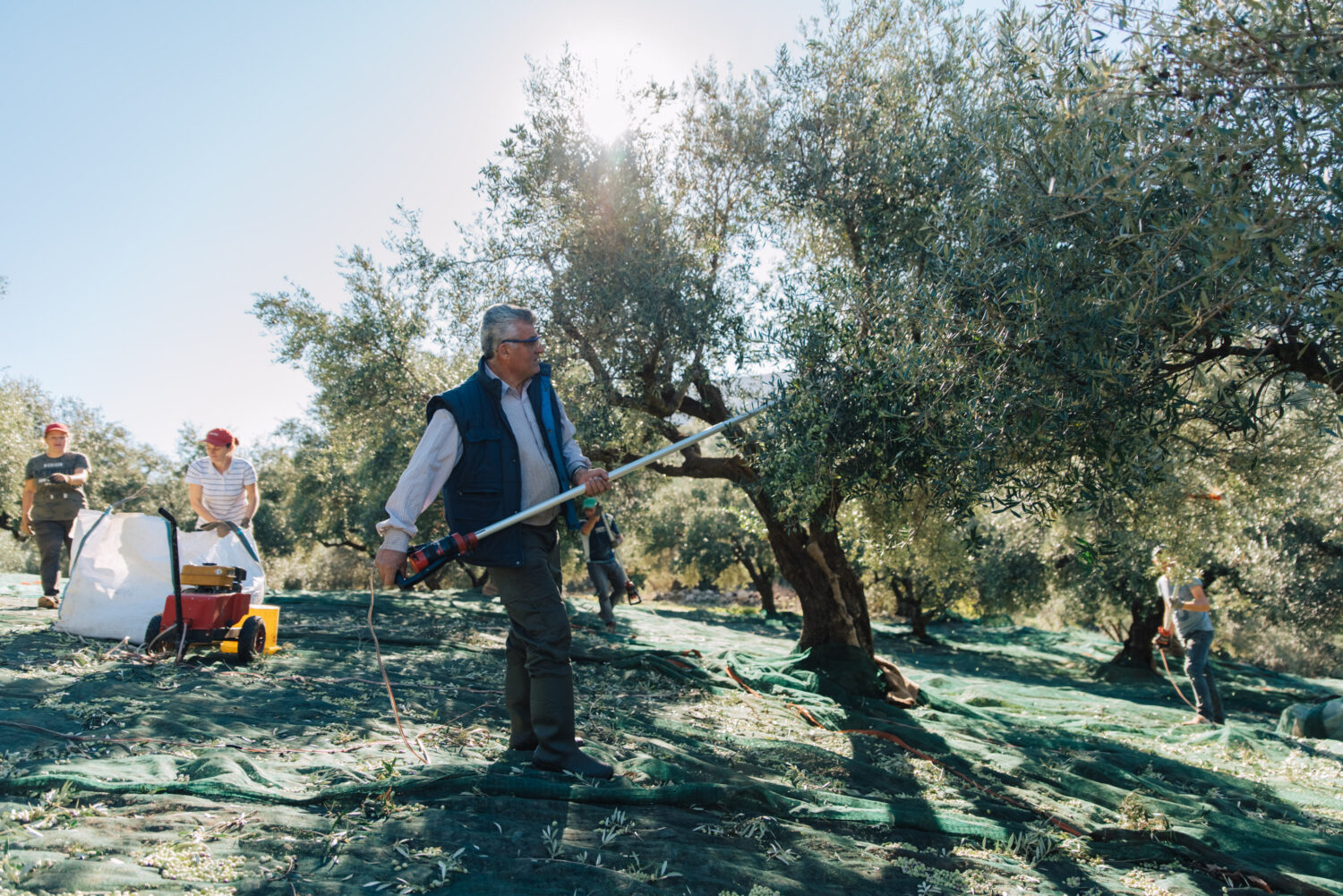
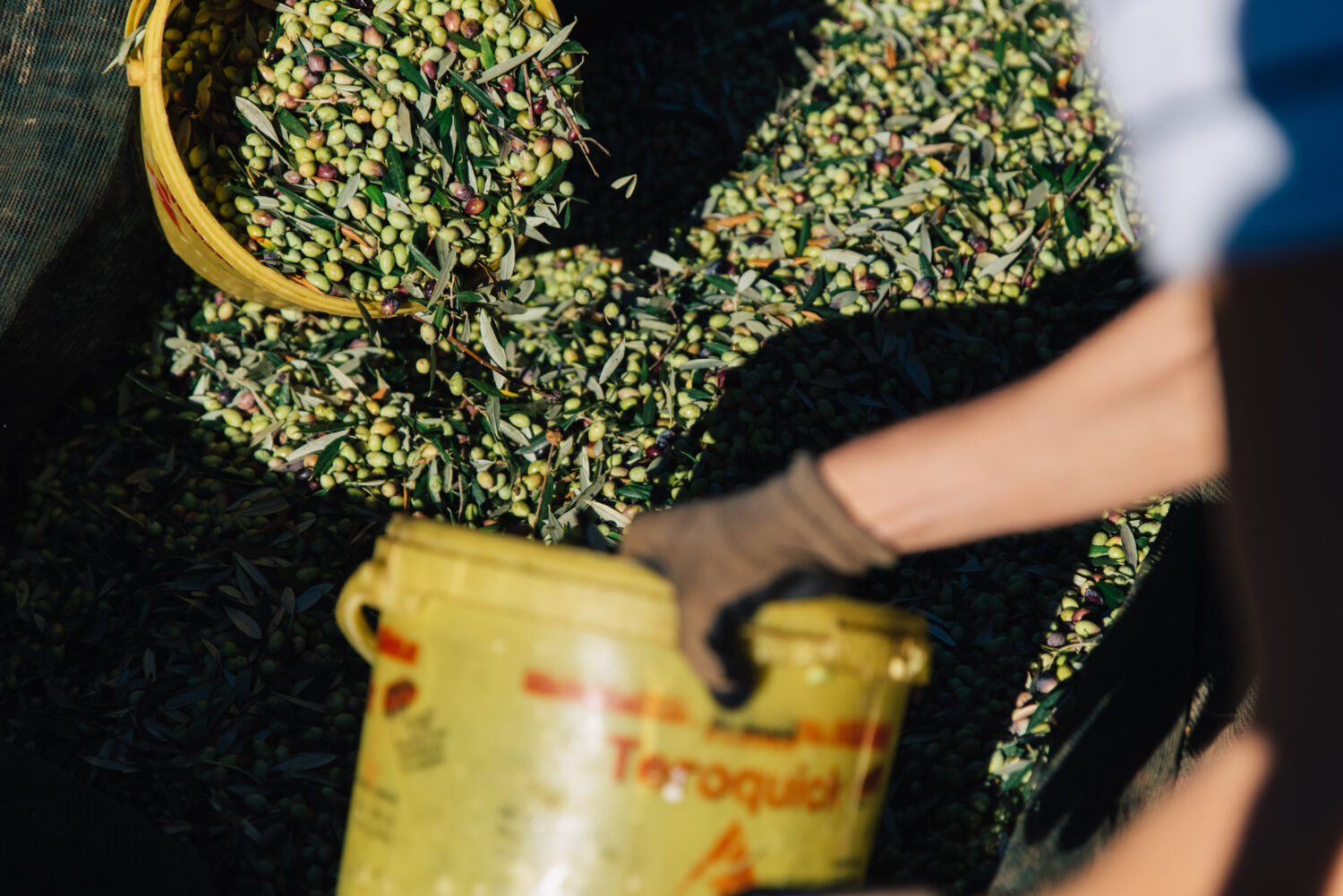
AC: What variety of olives are you harvesting?
TW: Honest Toil is made from 100% koroneiki olives, native here in Greece, a small green-purple olive and the variety with the highest polyphenol count! Our oil is “agoureleo” (early harvest), properly cold-pressed, we pick before fully ripe and press the same day, so it really does have all the necessities for the much-coveted high polyphenol content – it really is as good as it gets.
AC: Tell us a bit about your process: the age of the groves, the cultivation, and management of them.
TW: As we work in a cooperative format, with small-scale farmers from the area, our network is pretty resilient. Unlike other olive-growing regions, there’s no mega-farms around here with tens of thousands of trees. I’m slowly realising it’s something really special… we’re talking real micro-cultivation, with most people having no more than a hundred trees.
That’s really little considering even a mature, hundred-year old, well-maintained olive tree won’t yield much more than 10 litres of oil in a good year. Most people will grow just enough to supply their own families and they’re used to the natural alternation of good and bad years. It’s a real way of life and changed very little since ancient times.
As much as the farmers, I’m keen to keep alive the small-scale village presses who are a real dying breed because of competition from bigger, more monied industry. Small presses here still function on a collective basis: farmers bring in the harvested olives and hand over a percentage of the oil in exchange for the pressing. Everyone knows everyone and the whole process is based on trust.
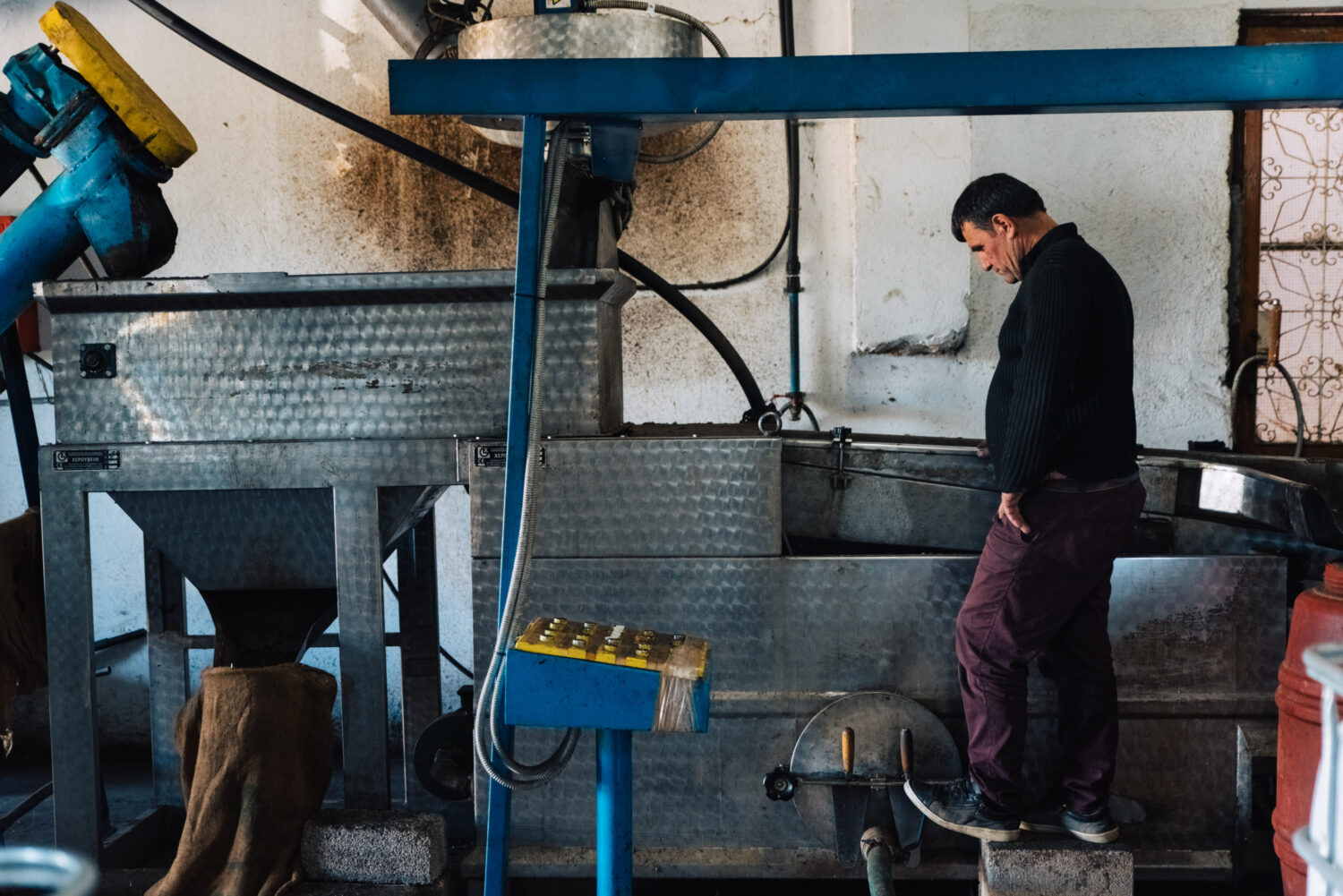
Both the lands and the village presses here are locally owned and run as family businesses – groves with a few hundred trees are considered large farms, which is in stark contrast to the intensive, large-scale production characteristic of other olive cultivating regions. We harvest with traditional, manual, low-impact methods, using sticks with ‘propeller-like’ endings that remove the olives from the branches, letting them fall onto large nets spread underneath the trees. They are then gathered into sacks and taken to the village press in the evening.
We’ve debated taking a loan to buy more olive trees, but we’ve quite consciously decided to work with other existing small-scale farmers in the neighbourhood. This way, we guarantee an income for them and support local, traditional forms of olive picking, making sure that the high quality olive oil from these groves ends up directly on your table.
While it might not be up to the standards of the olive oil, the post-harvest home-made wine that inevitably gets shared around the press after a grubby day of picking makes it all worth it!
AC: What about the region of Greece – what’s it like there and how did you come upon making the oil here?
TW: We’re based in Kyparissia on the West-coast of the Peloponnese, and we ended up here through travels in search of a life more aligned with our values… it’s rough and rugged, not the blue and white postcard houses people think of when they think of holiday Greece. Most people here have at least a few olive trees so it was only a matter of time before we were roped into the harvest and were being wowed down the press, glugging fresh olive juice. The fresh, green, raw oil mesmerised us so we agreed to take payment for our work in fresh olive oil. It was magical to be paid in olive oil – the physical result of our physical labour – and to know the very soil and trees that produced it.
AC: Talk us through harvest season and specifically the difference between new season olive oil and olive oil that is purchased later? Does it ‘age’ and therefore sort of mellow in bottle?
TW: Everyone from the taverna owner to the village priest, to the guy who runs the petrol station/gyros shop will stop what they’re doing for the harvest and pick their olives for as long as it takes.
Needless to say the only subject in the taverna for several months is olives: how many kilos you got per sack, the acidity of the result, and which press-master is the best and quickest to get the fruit from the sack into the malaxer.
The lifespan of olive oil starts ticking the moment the fruit leaves the tree. They say good quality extra virgin olive oil has a shelf life of two years but it’s incomparably best when fresh. It matures with time: the vibrant, robust, and green grassy freshness will become earthy, smooth and buttery.
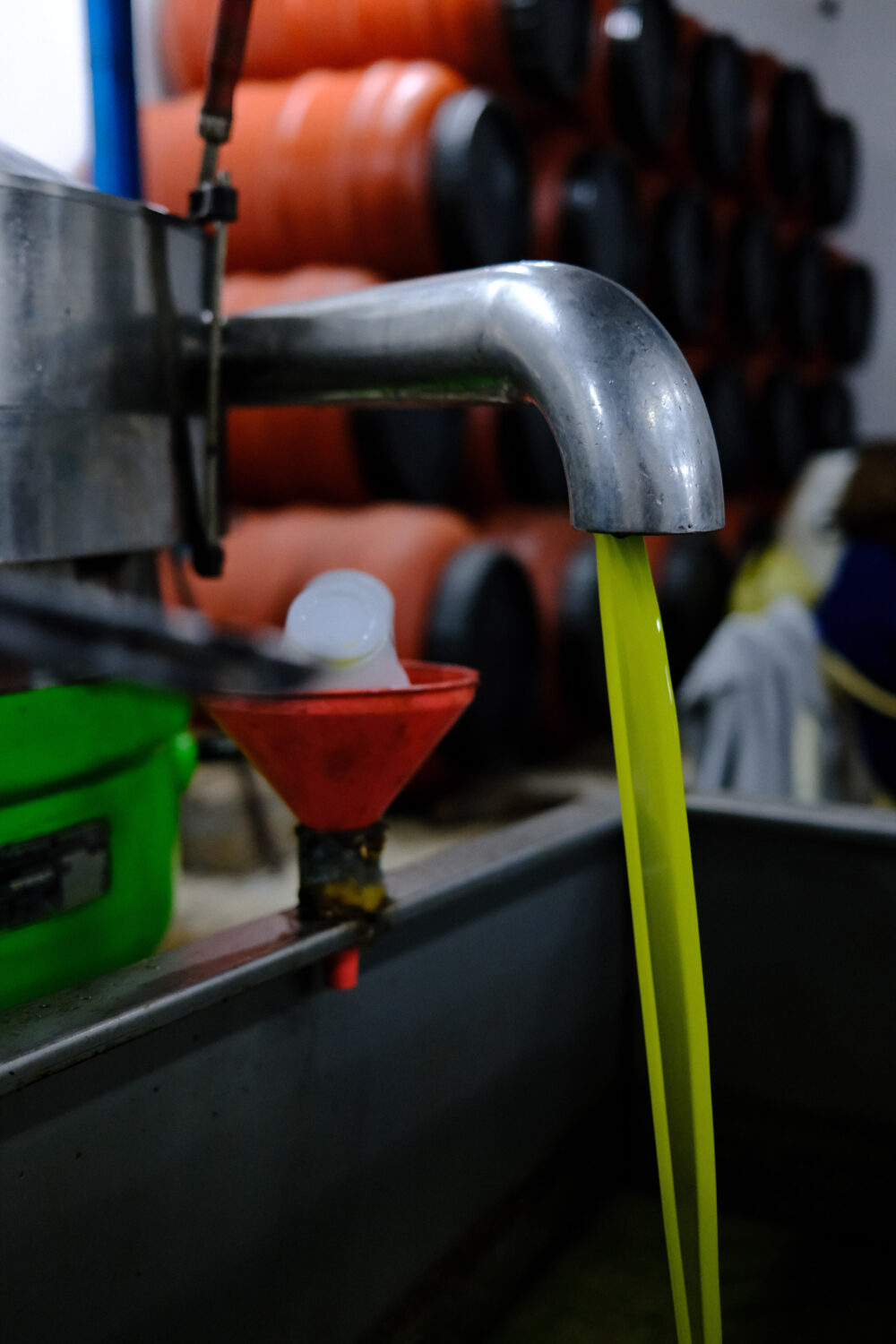
When you first taste real fresh extra virgin olive oil, it can be a real shock: the colour is neon green, the texture is thick, and the flavour is a real kick of peppery punch, with tasting notes of fresh-cut grass, green vegetables, artichokes, even unripe bananas.
Later on in the season, nearer summer and in the autumn, the flavour becomes more rounded, softer and earthy, the colour more of a golden hue. The oil becomes more transparent.
It’s probably not often talked about in the field of olive oil, but it really is a natural aging of a living product and I think important to appreciate it’s not the same oil six months down the line.
AC: I think it’s important to understand the economics of a single bottle and what goes into it / why it costs the consumer what it ultimately does.
TW: If we go with what I mentioned before, that even a mature olive tree doesn’t produce more than 10 litres per harvest, we’ll begin to understand the effort that really goes into a bottle of olive oil. That tree takes water and good soil and lots of human labour, looking after the land, pruning, and ultimately picking. Then comes the pressing, which requires a lot of expertise (passed down from one generation to the next). Add in the packaging, done locally in a small workshop, as well as the labels and the design process. Then you’ve got distribution from Kyparissia through Athens to the UK and within. And keeping all those threads in our hands is our job. These are the most basic ingredients. When there is a year of drought, for example – and even if that drought happens in Spain – it will affect the whole olive oil market and dictates prices throughout this whole chain. And there’s an increasing instability because of unpredictable weather patterns. All of this will eventually show up in the price, whether we like it or not. Our mission has always been to democratise good olive oil and make it available to as many people as possible at a realistic price, without bumf and pretentiousness. We’re trying hard to keep ourselves aligned with this mission even as it becomes more difficult.
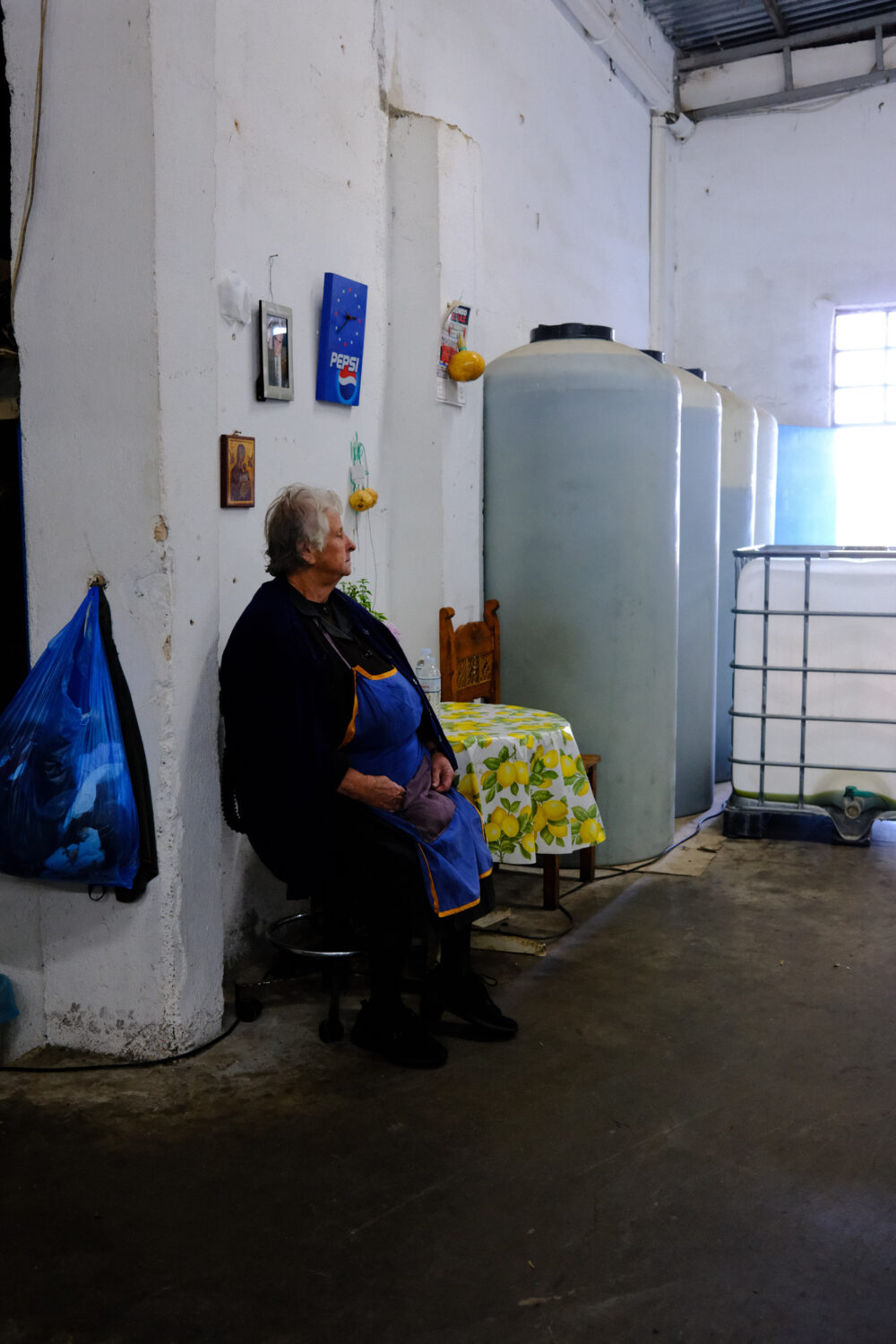
AC: Tell us a bit about distribution – I first came across Honest Toil in restaurants, I think. Is that a big part of your trade? I’m also never not amazed by the speed and efficiency of ordering through your online shop and receiving the oil within 48 hours! How do you make this happen?
TW: Ah thanks! We’re very on-it, but it isn’t always easy from afar.
From the back of a friend’s cargobike in Berlin, we’ve been supplying restaurants from day one. We hugely appreciate the support of amazing restaurants (from Bubala and NOPI in the UK, through to the Michelberger Restaurant or Barra in Berlin), just to name a few, run by chefs who really see the value of using ingredients with real provenance.
We’ve always been keen to supply the oil with as little packaging and with as small of a footprint as possible, and supply a lot of our restaurants in 20ltr tubs which we collect, clean and refill so have absolutely no packaging in the whole chain – quite a feat.
In Budapest and Berlin, we work with two amazing cargo-bike collectives so everything is delivered by bike. In the UK, cargo-bike delivery is trickier, but as we’re based in Greece we work with a great small logistics partner in the UK who speedily sends out orders with next-day delivery. In addition, my brother Louis has recently joined our team and he’s really the one behind the efficiency of day-to-day orders.
`
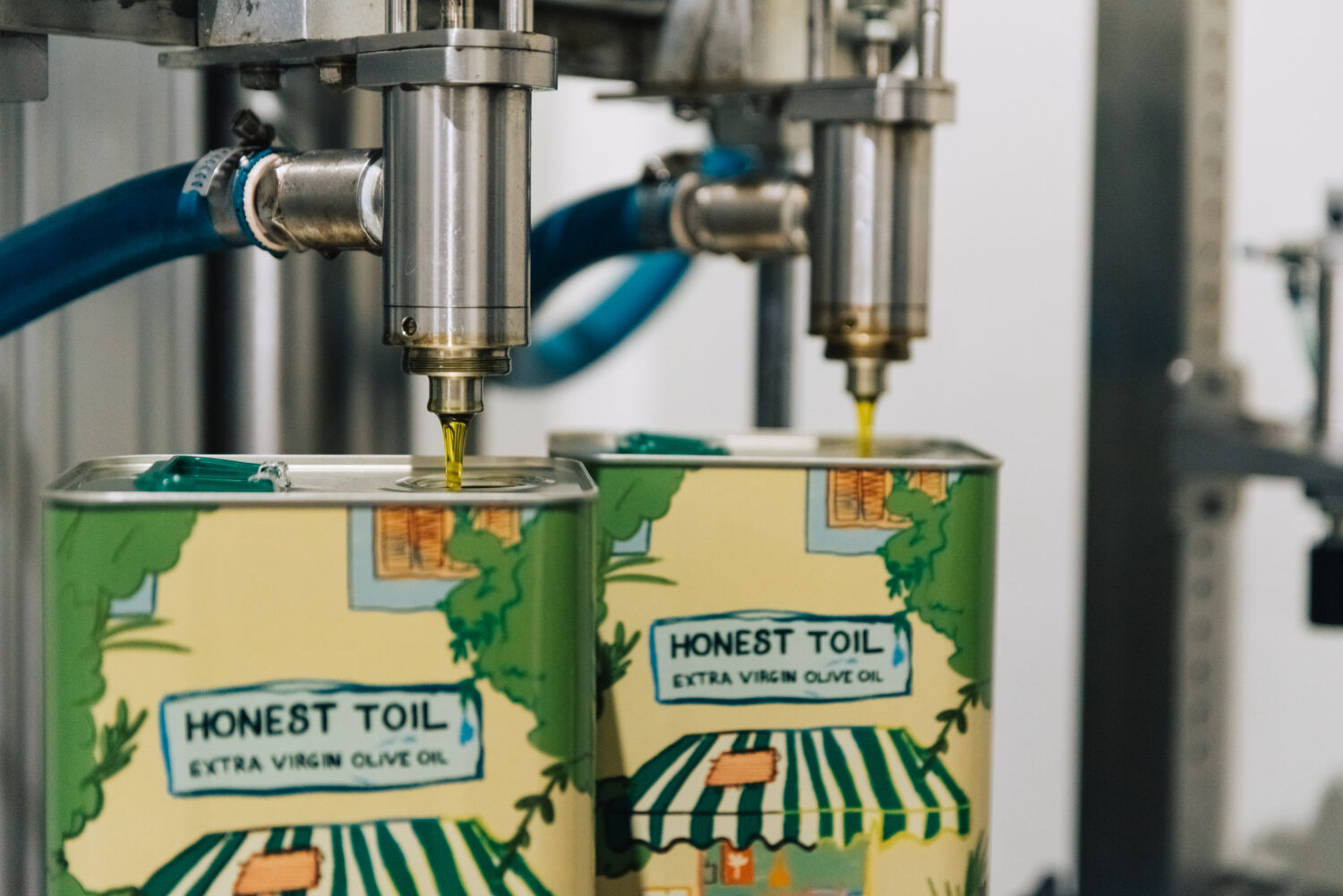
AC: What about the designs on the packaging – these really seem to set you apart. Tell us the story behind those.
TW: From the very first days of making paper cut-out olive tree collages on our friend’s kitchen floor, playing with making labels has always gone side by side with making the oil for us.
We’re friends with as many great artists as we are with farmers, so it always seemed obvious to play with having interesting labels.
From the beginning, in 2009, we wanted to have an olive oil that was direct, playful and available for refill/reusable against the backdrop of pretentious top-shelf options.
And the evolving labels are another way for us to have a fun collaboration, more than having any specific PR-endorsed “branding strategy” – I’ve been told it’s commercial suicide to change your branding every year, but it’s definitely more fun that way.
AC: Finally, maybe share a simple recipe which you think best shows off the characteristics of the oil…
TW: We’d never really been ‘foodies’, but having phenomenally good extra virgin olive oil as a staple ingredient turned us into intuitive chefs who wanted to share the beauty of adding this fresh cold-pressed juice to every dish. If you really want to taste the olive oil in all its glory, you’re best off matching it with a simple backdrop like potatoes or good bread. There’s nothing like fresh bread dunked in good olive oil with sea salt on top – that right there is the best recipe I can give you. If you wanna get a step more complicated, go for a ‘lazy’ potato salad: chop and boil some potatoes, skin on, then cover them in Honest Toil, lemon juice, sea salt, adding in some oregano, capers/olives, feta and spring onions if you want to be fancy.
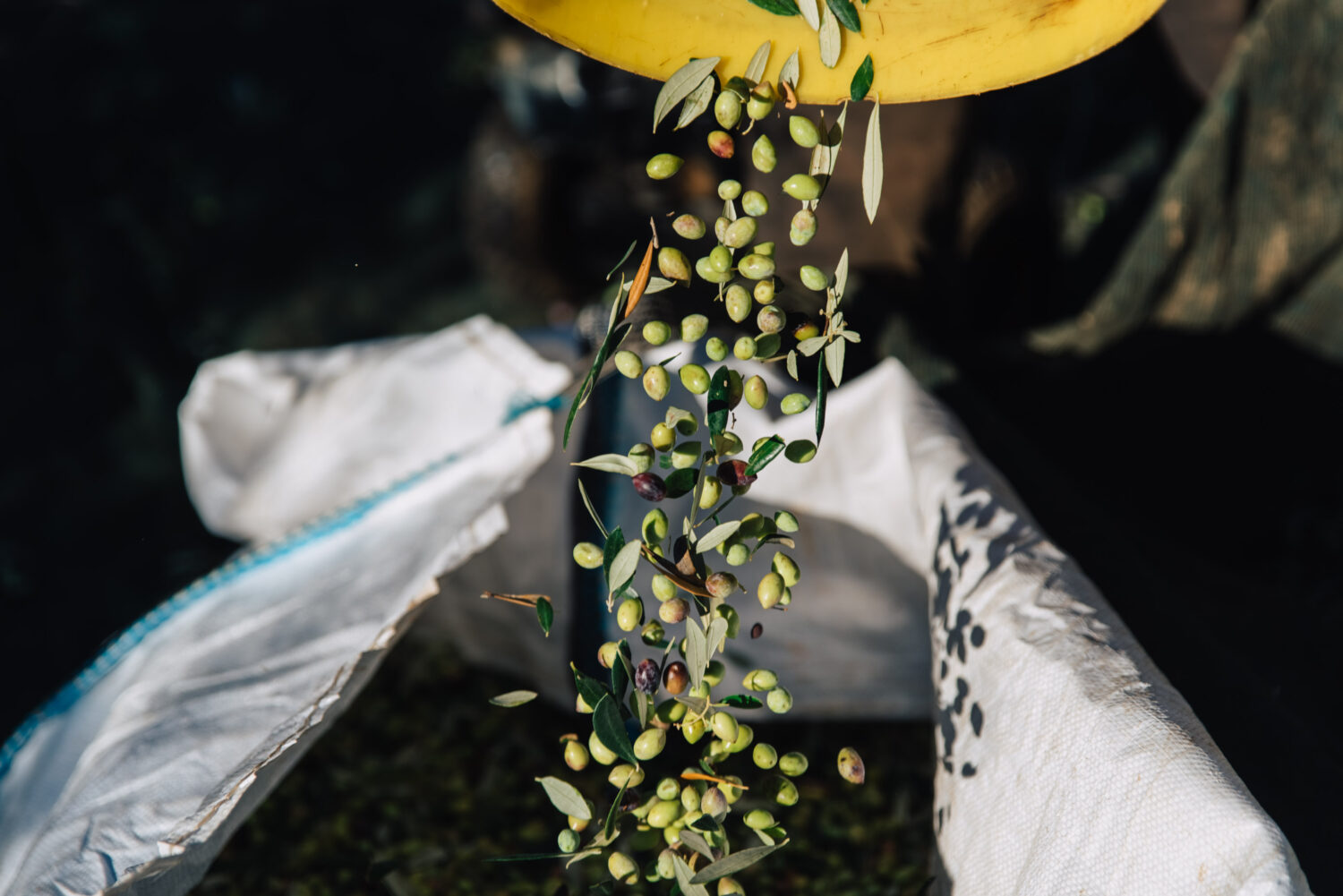
All photography of the 2024 harvest by Thomas Gravanis, whose work you can see here.